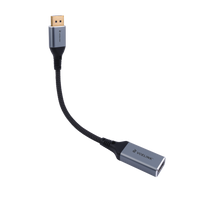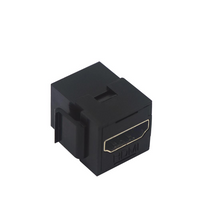Introduction
Nowadays, where videos reign over most of the content we consume, choosing between 1080p, 4K, and 8K can be confusing. We tend to think that more pixels mean better-looking images and better quality. Nevertheless, the real difference many times depends on other factors: screen size, viewing distance, and available content.
In this article, we’ll discuss what each resolution means, how the quality of your pictures scales, and which resolution is most adequate for different real-life uses. So, let’s get into it. Let’s begin by clarifying some basic concepts related to image resolution and then analyze the differences between 8K vs 4K vs 1080p.
Understanding Resolution Basics
1080p, 4K, and 8K are different screen resolutions for TVs, monitors, and other devices. Although there are other categories, these are the three most common ones. What differentiates them is the number of pixels that screens display, meaning the number of points that form the image.
A pixel is the smallest component of a digital display; it’s a minuscule square with a single color value. When millions of these pixels are organized in a grid, they create the images you see on your TV, phone, or monitor.
Resolution refers to how many pixels compose an image; it describes how many pixels fit across the height and width of that grid. For instance, 1080p means 1,920 pixels wide x 1,080 pixels tall (or 2,073,600 total). More pixels mean more detail, better display quality. Nevertheless, this applies only when the resolution matches the right screen size, content type, and viewing distance.
The screen size is defined as the dimension of the display and it’s measured diagonally, from one corner to the opposite one, in inches.
Pixel density measured as PPI (pixels per inch) also affects sharpness of a display. The PPI informs how tightly packed the pixels are. The sharpness of a display also depends on pixel density.
Let’s illustrate these concepts with real-life examples:
- A 1080p smartphone with a 6” screen will look sharper than a 1080p 42” TV. Why? Solely because the phone has a higher PPI.
- A 24” monitor will look clear at 1080p, as you’ll be sitting close to it, and the pixel density is relatively high. But if you have a 65” TV with the same resolution, the images will look soft and even pixelated.
Interesting Fact: On phones and tablets, pixel density counts as much or more than resolution. On screens that exceed 300 pixels per inch, the pixels are so tightly packed that you can’t distinguish them at the usual viewing distance for handheld devices (10 to 12 inches). This is the concept that made Apple coin the term “Retina display”. For devices that are held much closer to the eyes, like VR headsets, the pixel density has to be much higher (over 600 PPI) to maintain the same visual effect.
Expert Tip: If you go shopping for a TV or monitor, always match the resolution to your screen size. For screens under 40”, 1080p resolution will be enough. For larger ones like a 55” TV, choose 4K or higher for viewing sharp images to avoid pixelation.
What Is 1080p (Full HD)?
For years, 1080p, also called Full HD (full high definition), has been the standard. It provided enough image clarity and quality for smaller screens.
Resolution: 1,920 x 1,080 (which is about 2.07 million pixels)
Pros: It’s affordable, requires less data transfer, and is broadly supported across many devices and streaming services.
Cons: It loses sharpness on larger screens.
Real-life Example: Many budget TVs, laptops, monitors, and older streaming devices still use 1080p. This is sufficient for presentations, video calls, and standard streaming.
Expert Tip: If your TV is smaller than 40 inches and you typically watch HD channels, a 1080p resolution is still a cost-effective solution.
What Is 4K (Ultra HD)?
4K (Ultra HD) has bacome the new standard with four times the pixel count of 1080p, enabling users to enjoy sharper images on medium to large screens.
Resolution: 3,840 x 2,160 (over 8.3 million pixels).
Pros: Offers superior clarity, supports HDR, and there’s a wide variety of available content.
(HDR or High Dynamic Range is a technology that increases the contrasts between the darkest black and brightest white. It expands the range of brightness and color, delivering more realistic and detailed images.)
Cons: It requires higher bandwidth and stronger hardware
Real-life Example: A 55” 4K, TV is the most common choice for living rooms. Streaming services typically deliver most of their premium content in 4K, and gaming consoles are capable of supporting 4K graphics.
What Is 8K Resolution?
8K is currently the highest commercially available resolution standard for consumer displays, which allows amazingly detailed images for very large displays. However, available content is still scarce.
Resolution: 7680 x 4320 pixels (about 33.2 million pixels). This means it has four times the pixels of 4K, and sixteen times more than 1080p.
Pros: It provides extreme sharpness on screens of over 65 inches. It’s great for scaling very large images.
Cons: There’s limited content, requires high bandwidth and expensive hardware.
Where to find native 8K content:
- YouTube and Vimeo allow uploading and streaming 8K videos
- Many modern personal devices such as cameras or smartphones, can record in 8K, and you can upload that content to video platforms.
- In the film industry, major studios are already shooting in 8K or scanning 70mm films in 8K.
- Some gaming consoles withstand 8K, but this depends on the content being in 8K
- Major streaming services (like Netflix or Amazon Prime) still don’t offer native 8K content yet, but they started to film in 8K for future use.
Real-life Example: When you visit an electronics store, you’ll see them showcasing 8K large TVs, displaying nature footage with vibrant colors and smooth motion, where you can detect every feather, leaf, and even the eyes of little insects. To achieve this effect, besides 8K resolution, you need to view these huge screens from a close distance
8K vs 4K vs 1080p: Side-by- Side Comparison
|
Factor |
1080p (Full HD) |
4K (Ultra HD) |
8K (UHD) |
|
Resolution |
1,920 × 1,080 (~2.07M) |
3,840 × 2,160 (~8.3M) |
7,680 × 4,320 (~33.2M) |
|
Relative Pixels |
1× |
4× |
16× |
|
Ideal Screen Size |
≤40–50" |
40–75" |
65"+ |
|
Content Availability |
Very high |
High |
Very limited |
|
Bandwidth Demand |
Low |
Moderate |
Very high |
|
Cost |
Low |
Moderate |
High |
Real-life Examples:
If you watch sports:
- In 1080p, you can clearly see the players
- In 4K, you can notice clothing textures and grass details.
- In 8K, you can detect individual blades of grass or players’ sweat (only on very large screens with close-ups).
Expert Tip: Don’t focus only on resolution. Many times, a properly set up 4K High Dynamic Range TV (HDR TV) looks better than an 8K model without HDR support.
8K vs 4K vs 1080p: Which Resolution Should You Choose?
To get the most out of your screen, it’s not just about choosing the highest resolution; it depends on the screen size and how and where you’ll use your screen.
- 8K resolution: It’s the ideal choice for professional editing, very large home theaters, and digital signage.
- 4K resolution: The best option for living room TVs, streaming, and gaming for mid-to-large displays.
- 1080p resolution: This is the resolution to choose for small TVs, regular office monitors, and budget setups like classrooms or offices.
Real-life Example: Moving from a 40” 1080p TV to a 55” 4K model shows a noticeable difference. Going to 8K on the same TV doesn’t show many differences, unless you sit very close to it.
Expert Tip: Don’t neglect considering your space. A 4K projector may beat an 8K TV if you want to have a cinematic experience on a large wall.
Additional Expert Tip: Before spending extra money on 8k, verify if your gaming or streaming devices support it.
Viewing Distance and Screen Size
Resolution is important, but it only matters if your eyes can really notice the difference.
- If you sit too far, a 4K may look the same as 1080p. Only if you sit close to a big screen will you notice an obvious difference.
- In most living rooms, 4K already delivers the maximum sharpness you can perceive at the usual viewing distances of 8 to 10 ft.
- If your screen size grows but the resolution doesn’t, PPI will drop. For this reason, 4K is necessary for large TVs, while 8K is only justified when you use very large screens.
Real-life Example: If you look at a 65” TV from 10 feet away, it will look quite identical in terms of quality between 4K vs 8K; however, if you look at that same screen 6 feet away from it, 8K will let you see more fine details.
Expert Tip: Before buying a new TV, use a “TV size vs viewing distance calculator”. This is a simple way to know if you’ll actually enjoy the benefits of a higher resolution device.
8K vs 4K vs 1080p: Conclusion
If we compare 1080p, 4K, and 8K, it’s clear that each one is suitable for different uses. 1080p is still useful and functional for small screens and budget setups. 4K is a combined solution, with great content support and great for low to mid-budget hardware. 8K, on the other hand, provides striking images with color contrast and impressive details. As we explained, though, you can enjoy its advantages only on very large screens.
For most people, 4K resolution is the best choice, as it blends sharp detail with a wide availability of content, and provides value for money. 8K is still niche and future-focused.
Before upgrading, don’t forget to compare screen size, room distance, and costs of new equipment; that’s the smartest way to decide between 1080p, 4K, and 8K TVs or screens.






Geben Sie als Erster einen Kommentar ab.
Hinterlasse einen Kommentar